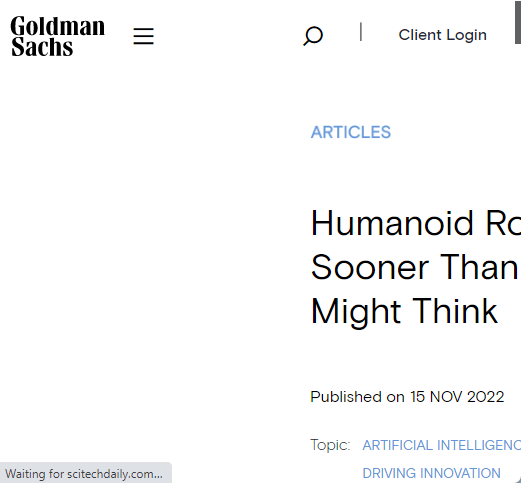Humanoid robots: sooner than you might think
Not without human hands. And should be number one on the list. I won’t see it until 2030.
The first robots are now making their way from the factory to our homes and offices. In a recent report, Goldman Sachs Research estimates a $6 billion market (or more) in people-sized-and-shaped robots is achievable in the next 10 to 15 years. This market could fill 4% (or more) of the projected US manufacturing shortage by 2030, and 2% (or more) of global elderly care needs by 2035.
GS Research also makes a more ambitious, additional projection. In a \”blue-sky\” scenario, if the obstacles of product design and use cases, technology, affordability, and widespread public acceptance are completely overcome, the report The Investment Case for Humanoid Robots states that the market could reach up to US$154bn in 2035. This market could close the gap in the workforce between 48% and 126%, as well as the caregiver gap for the elderly.
Humanoid robots are limited to working for only a few hours before needing to be recharged. The research shows that some humanoid robotics are able to handle cognitive and mental challenges, but none of them can do both. A self-driving car is one of the most advanced robots-like technologies available on the market. But a robot that can do both would need to be much more intelligent and have better processing capabilities. The report states that \”no humanoid robot has been commercialized in the history of development.\”
Source:
https://www.goldmansachs.com/insights/pages/humanoid-robots.html

Leave a Reply